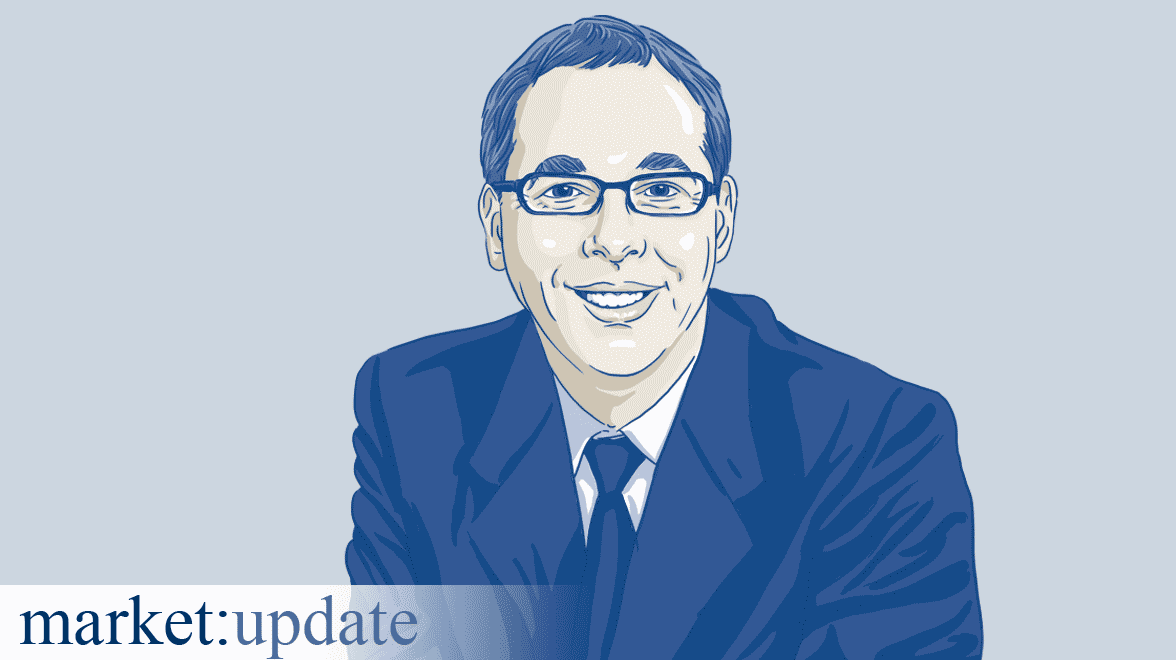Outlook for the 2nd quarter 2021: Rising US bond yields and turbulent times for equities
Bond markets: Yields on ten-year US government bonds are likely to climb to over 2%
The first quarter brought considerable surprises on the European bond markets. The first surprise was the outcome of the US Senate by-election in the state of Georgia. Quite unexpectedly, the two Democratic candidates won, giving the Democrats a majority in the US Senate. This enabled US President Biden to implement the promised USD 1.9 trillion stimulus in March and even to launch a new program for infrastructure, education and climate control. As a result, growth prospects improved significantly and inflation expectations rose. Our extensive statistical analysis shows that government debt and budget deficits do not affect yield levels (Japan is a perfect example) but only monetary policy, growth and inflation. This means that the rise in yields on ten-year US Treasuries from around 0.9% at the end of December 2020 to just under 1.8% at the end of the first quarter of 2021 was thus not due to expected higher government debt but to improved growth and inflation prospects.
The second surprise was the sudden boost that yields on ten-year German Bunds got from US government bond yields. From August 2020 to January 2021, yields were still moving independently of each other, which led us to the assumption that the European Central Bank (ECB) might have put the European bond market into a deep sleep due to its very extensive securities purchases. However, the ECB then decided at its March meeting to increase the volume of bond purchases in order to decouple the European bond market again and stabilize yields. In this environment, German Bunds lost 2.4% and euro zone government bonds 2.3%, according to the corresponding indices of BofA Merrill Lynch. Unsurprisingly, the improved economic outlook caused corporate bonds to outperform government bonds. Euro investment-grade corporate bonds lost only 0.7% and high-yield bonds even gained 1.5%, also according to the corresponding indices of BofA Merrill Lynch.
For the second quarter, we expect very strong economic data from the USA, as the low infection figures allow the economy to gradually open up. In addition, inflation figures will rise sharply due to base effects. It is therefore very likely that yields on ten-year US Treasuries will climb to over 2.0%. By contrast, due to the ECB's extensive interventions, yields on ten-year German Bunds are likely to increase only slightly.
Equity markets: Expected rise in US bond yields points to choppier times ahead
In the first three months of the year, price gains seen on the global equity markets in the fourth quarter of last year continued. European equities narrowed the gap again somewhat compared with other equity markets. The MSCI Europe benchmark gained 7.7% compared with 6.3% for the MSCI World index and 4.0% for the MSCI Emerging Markets index, all in local currency. The better performance of European equities can be explained by the fact that there was a worldwide sector rotation in the first quarter, as higher government bond yields increased the attractiveness of value stocks over growth stocks and improved growth prospects boosted cyclical stocks. The European equity market, with its high weighting of value and cyclical stocks, benefited disproportionately from this.
We forecast strong economic data and a rise in ten-year government bond yields which means the trends from the first three months should continue in the second quarter. Equity market players generally anticipate developments in the real economy six months in advance. By then, the population in Europe should be sufficiently inoculated to allow the economy to fully reopen. Accordingly, the development of the pandemic in Europe should not have a significant impact on stock prices unless the pace of vaccination fails to accelerate or dangerous new virus variants emerge.
In addition, the results of a survey by BofA Merrill Lynch show that the global fund managers interviewed appear to want to use a yield level of over 2.0% on ten-year US government bonds to temporarily reduce the risk in their funds somewhat. They believe this would cause a correction in equity prices of more than 10%. If yields on ten-year US Treasuries rise even further to above 2.5%, the fund managers surveyed would even be likely to shift their portfolio holdings on a large scale from equities to government bonds. The second quarter thus promises to be more unsettled on the global equity markets, and a price correction of more than 10% cannot be ruled out in view of likely rising bond yields.
Economy euro zone: Third Corona wave and slow vaccination pace
By mid-March, the euro zone seemed to have brought the second wave of the Covid-19 pandemic well under control, so that some countries decided to relax their corona lockdown measures again. However, this was quickly followed by a third wave due to the rapid spread of the highly contagious British variant. The chances of a major relaxation in April and probably even in May have thus decreased, especially since the pace of vaccination has still not accelerated noticeably.
Against this background, we revised our growth forecast for the euro zone down to only 3.5% in 2021, but left the forecast for 2022 unchanged at 4.5%. By contrast, we have raised our inflation forecast to 1.7% for 2021 for the euro zone, but expect inflation to fall to 1.4% in 2022. The rise in inflation forecast this year is mainly due to base effects in energy and food prices as well as the reversal of the VAT cut and the introduction of a CO2 tax in Germany. In our view, a high negative output gap and high (hidden) unemployment argue against a further rise in inflation in 2022. We believe there is a 25% risk that inflation will rise in 2022. For this to happen, private households and companies would have to fall into a spending boom after the economy opens up, resulting in negative savings rates because of reduced financial assets. At the same time, government spending would have to accelerate according to plan and exports would have to be boosted by a booming global economy. An inflation rate of 2.0% in 2022 combined with the prospect of sustained rising inflation would undoubtedly prompt a reaction from the European Central Bank (ECB). In this case, the ECB would end all securities purchasing programs as early as 2022 and raise the key interest rate in 2023. However, experience shows that European consumers have a high propensity to save, which means that a large portion of savings is likely to be held back as a safety buffer for future crises.
So, should our baseline scenario materialize, the ECB is likely to end the PEPP (Pandemic Emergency Purchase Program) in March 2022 and the APP (Asset Purchase Program) in 2023. It would then slowly relinquish its control over the bond market in the euro zone. As recently as the March meeting, ECB President Lagarde impressively demonstrated her determination with the ECB's decision to increase the volume of purchases under the PEPP in order to keep euro zone bond yields persistently low so that the ECB can keep almost completely control over the euro zone bond markets.
Economy USA: Full steam ahead for growth in 2021
The ink is barely dry on the bill for a USD 1.9 trillion stimulus package and US President Biden is already planning the next government program for infrastructure, health and climate control to the tune of USD 3.0 trillion. A budget deficit of just under 16% of gross domestic product (GDP) in 2020 could thus be followed by an almost unchanged deficit of around 15% of GDP this year. In 2020, government aid did a good job of offsetting losses caused by the pandemic in household and corporate income and avoiding social hardship. This year, government aid is just a big extra income for many businesses and households, as a return to normalcy was already observed towards the end of March. The US population seems to have built up a high level of immunity due to the high level of infection, and vaccinations are progressing rapidly, so the pandemic can actually already be described as over.
Employment in the service sector is therefore likely to rise by several million in the coming months. Accordingly, we have raised our growth forecast for the USA to 6.0% this year, but are already considering the next correction to 7.5% depending on whether the new government program can be adopted. It would be the strongest growth since 1950.
One consequence of 6.0% or perhaps even 7.5% growth is likely to be a significant deterioration in the current account balance, since strong growth will automatically draw many imports into the country, which will also mean a noticeable growth spurt for the rest of the world. It is undoubtedly a risky economic policy strategy, geared towards next year's midterm elections and also social peace. After all, if only a small portion of government aid is saved, this would be a big positive fiscal multiplier with most of the money spent, thus boosting demand. Then demand could even exceed supply and the output gap would become positive. Such excessive demand could lead to significantly rising consumer prices, but only if businesses also raise prices. In recent decades, however, companies have hardly responded to excessive demand or excessive supply in their pricing policies. Indeed, the Phillips curve has been flat – and to this day, it is unclear why it flattened. Many experts believe the main reason for this phenomenon is that central banks have succeeded in anchoring corporate inflation expectations at the inflation target. Since companies trust that the central bank will ensure a stable price environment in the future, they react less and less to the current economic environment in their pricing decisions. Thus, as long as the Federal Reserve enjoys a high level of confidence, businesses are unlikely to make major price changes, and the risk of a rapid rise in inflation would be low. However, the Fed's new monetary policy strategy of average inflation targeting could create uncertainty in the inflation outlook and loosen the anchoring of inflation expectations. This would allow for a noticeable increase in inflation. However, we see only a 30% to 40% probability of a new inflation regime in the USA with core inflation rates beyond 3.0% in the coming years.
Economy Asia: Expectations for Japan possibly too low; China's double-digit momentum an inflation risk
According to a survey by Bloomberg, most economists expect surprisingly weak economic growth in Japan of 2.8% this year and 2.1% in 2022, meaning that Nippon's gross domestic product would not reach its 2019 level again until 2023. Experts see consumption in particular as a burden on growth, while they believe exports could become the driver of growth. The forecasted weakness in consumption could be linked to the fact that the Japanese government is providing less aid than the USA and Europe. However, strong exports in the context of a booming global economy are in line with historical experience. Of all major regions in the world, corporate profits in Japan are the most responsive to changes in global economic growth. Also, stock prices in Japan generally show very strong reactions to changes in world trade. As a result, growth expectations may prove to be too low, as a positive export impulse usually results in higher corporate investments due to increased profitability – and this, in turn, leads to higher employment and rising consumption.
China's economy is expected to grow by around 8.0% this year. Consumption and exports are the expected drivers. The current consumption boom in the USA and the somewhat later expected consumption upturn in Europe will act as a strong magnet for Chinese exports, which are expected to grow at a double-digit rate this year after 3.2% in 2020, thus ensuring a high current account surplus. This should be accompanied by a noticeable rise in employment and wages, thus fueling consumption. China's government is also planning to increase social spending in the new five-year plan, so Chinese consumers will be able to reduce their very high precautionary savings and consume more. The government is thus faced with the problem that economic growth could be too strong, causing inflation to rise noticeably as it did in 2009. At that time, there was increased social unrest due to high inflation. Against this backdrop, the Chinese government recently put the brakes on infrastructure spending and on regulating the real estate market in order to prevent the economy from overheating. The central bank has also changed its monetary policy to neutral rather than stimulative – in the hopes of initiating debt reductions. Of course, in this environment there is always a risk that the government might hit the brakes too hard and weaken the economy surprisingly sharply – or that it will underestimate the power of the upswing, causing consumer prices to shoot up too sharply.
More articles
This document published by Metzler Asset Management GmbH [together with its affiliated companies as defined in section 15 et seq. of the German Public Limited Companies Act (Aktiengesetz – "AktG”), jointly referred to hereinafter as “Metzler“] contains information obtained from public sources which Metzler deems to be reliable. However, Metzler cannot guarantee the accuracy or completeness of such information. Metzler reserves the right to make changes to the opinions, projections, estimates and forecasts given in this document without notice and shall have no obligation to update this document or inform the recipient in any other way if any of the statements contained herein should be altered or prove incorrect, incomplete or misleading.
Neither this document nor any part thereof may be copied, reproduced or distributed without Metzler‘s prior written consent. By accepting this document, the recipient declares his/her agreement with the above conditions.
 Deutsch
Deutsch English
English

